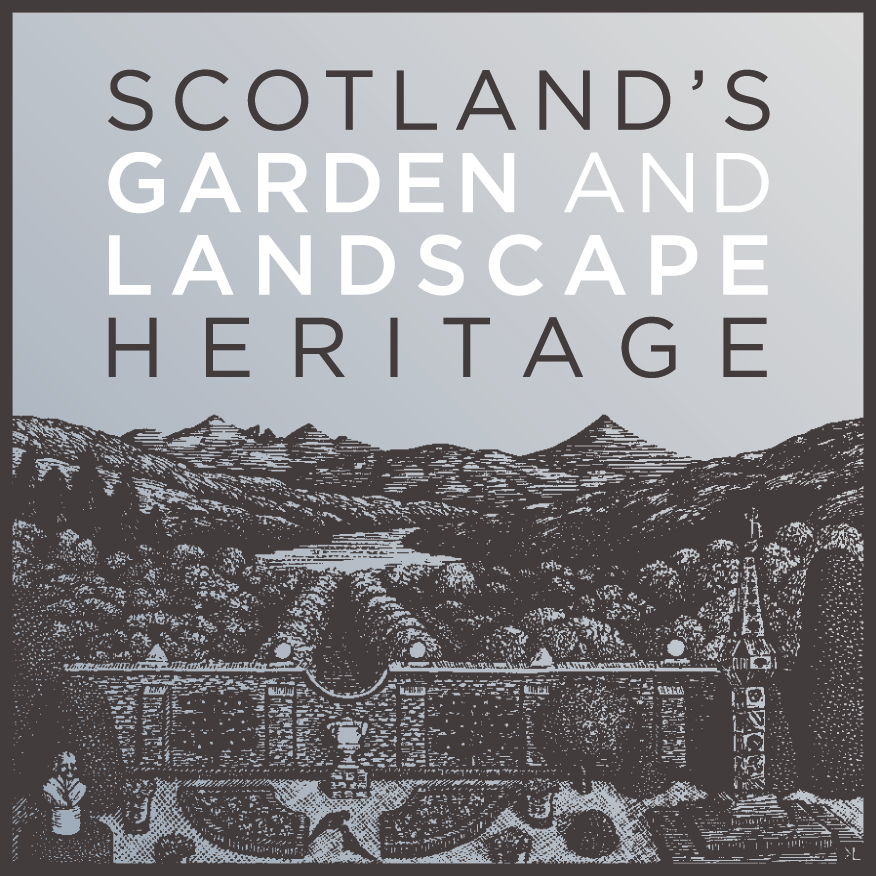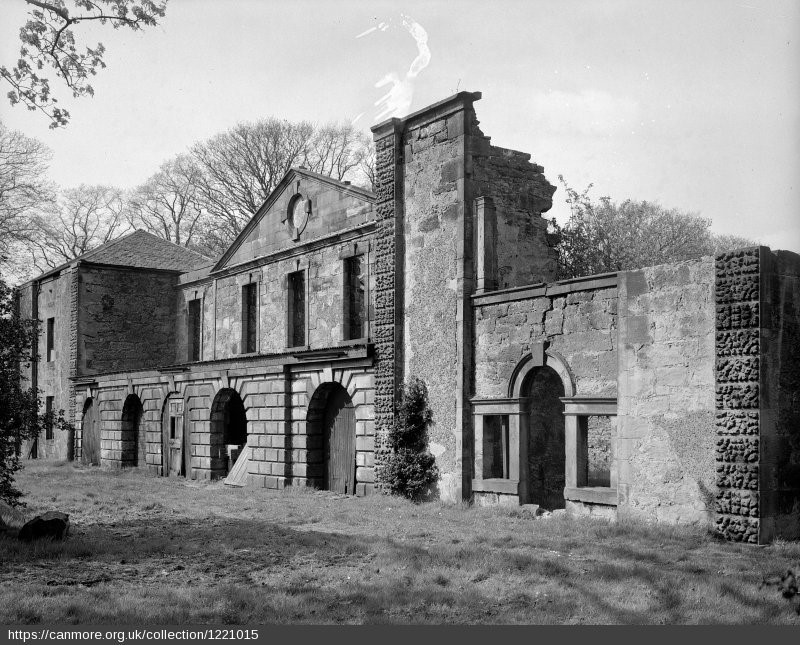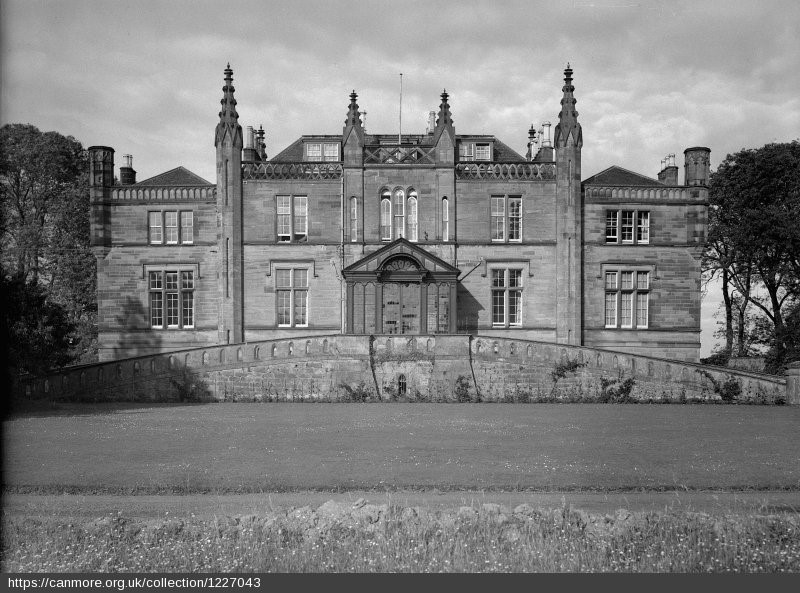As Scotland’s Garden and Landscape Heritage (SGLH) Chairman I am very proud to present this story about Muiravonside Country Park by Iain Kirkman, volunteer on the Glorious Gardens team assigned by SGLH to the recording of non-inventory designed landscapes and gardens in the Falkirk area. The Glorious Gardens project was launched in Falkirk in 2015 and was funded by Historic Environment Scotland. This is one of the 16 sites covered by SGLH in this area. A similar project was carried out in the Clyde and Avon Valley, and we are currently planning a third phase, which will focus on sites in East Lothian. For more details, please go to https://www.sglh.org.
Muiravonside Country Park is a marvellous location for a family day out. The former landed estate is set in 170 acres of beautiful woodland and riverside walks, with a rare breeds demonstration farm, sculpture trail, children’s play area and well-preserved farm buildings complete with café. You can learn about the park’s history here.
Muiravonside is much more than a great day out. The park is a fascinating record of more than 700 years of Scotland’s farming and industrial history. A 1978 Stirling council report notes:
“The Muiravonside Estate is a typical example of early 19th century landscape improvement with fields, shelter-belts and farmsteads which have all been consciously designed and sited to create a picturesque landscape of trees, changing vistas, prospects and enclosures. Furthermore, most of the features of everyday estate life of the time are present, including dovecotes, lime kilns, sawmills, curling ponds, mill lades, market gardens, chapels and footpaths.”
“Morganessette”
However, our story begins much earlier, around 1189, with a charter granting occupation of “Morganessete,” (Morganside) by marriage, to Richard of Melville. The charter identifies the estate’s boundaries as a number of “ways” linking physical points on the ground, including “St Morgan’s seat,” a larger area than the present day park. The land was probably originally granted to Melville’s predecessor as part of the introduction by King David 1st of Anglo-Norman feudal tenure in Scotland earlier in the 12th century. As you enter the estate from the main road, you see Castlehill, a tree-covered mound in the field to the right and the probable site of the medieval “motte and bailey” castle.
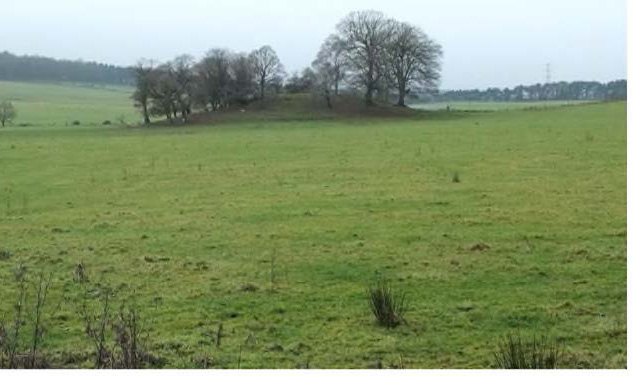

Feudal Muiravonside
“Morganside” remained annexed to the Barony of Melville for some 300 years but in 1471 passed, by marriage, to the Ross Barony of Hogshead. A member of a cadet branch of this family was probably responsible for building the first great house in the 1550s. John Adair’s 1680s survey of West Lothian shows the estate as “Nouk,” possibly taking its name from its position in a bend or “nook” in the Bowhouse Burn.
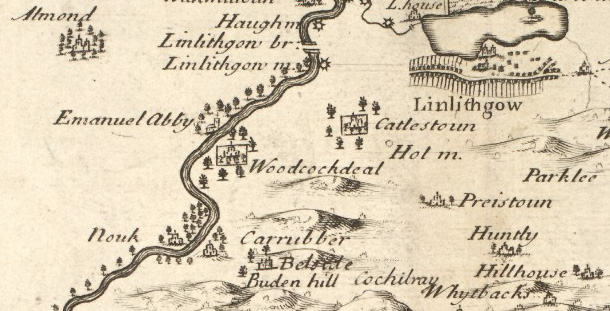

Between the introduction of feudal tenure and the agricultural improvement movement of the 18th century, land in Scotland was divided into estates (held by the crown, church or secular lords) and farmed in “ridge and furrow” open fields – in a land-share system known as “runrig” - with infield, outfield, and common pasture. (The 1189 charter includes “the common pasture of Manuel” as part of the “Morganessete” lands.) The contrast between enclosed and unenclosed land is clearly visible in the 1689 Bleau map below. Muiravonside and most of the neighbouring estates are unenclosed, as distinct from enclosed woodland (set aside by the feudal system for hunting).
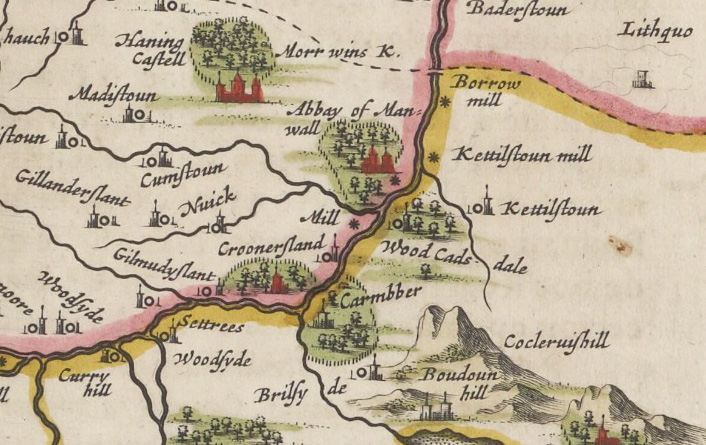

In 1685, the estate passed from the Barony of Melville to become the independent “Barony of Morrowinsyde” with permission to hold a weekly market and two annual fairs. Between 1685 and 1835, Muiravonside passed through the hands of a number of families, most notably the McLeods (whose Jacobite escapades make for interesting reading) and the Stirlings of Drumpellier. A landed estate like Muiravonside was a major economic undertaking, dependent for most of its income on rents and on the labour of tenants, sub-tenants, cottars and landless labourers. They mostly lived in farmsteads within the estate, called “touns.” (“Fermetouns” in the lowlands, “Bailetouns” in the highlands).
Agricultural Improvement
From the late seventeenth century onwards, Scottish farming was radically transformed by enclosure and related agricultural improvements, or “lowland clearances.” Irregular, open fields and common land were enclosed as orderly, rectangular fields, protected by dykes and hedges. The people of the lowland touns were relocated to new or re-planned local farmsteads and towns.
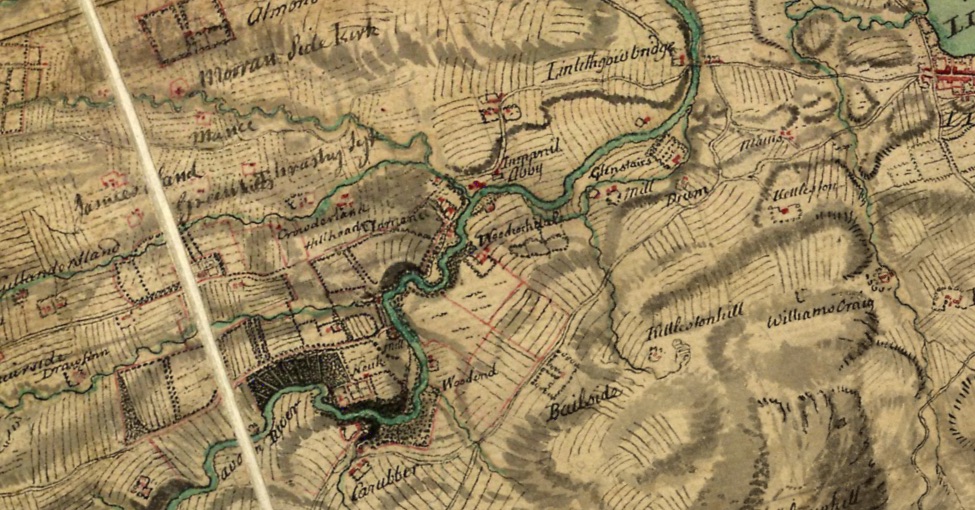

This process began early in Muiravonside as shown on the 1750s Roy map. Here most of the Muiravonside estate is enclosed; lands to the north, west and east remain unenclosed, open fields. By 1813, an estate plan shows a grid of regular, named fields, with woodland shelterbelt protection, and parks, plantations and orchards. The woods provided shelter, pleasant walks, and timber. You can see farmsteads, including at Newparks, and the larger offices, stables and dovecote east of the mansion house.


Charles Stirling, an enthusiastic improver and sometime Vice-Chair of the Stirlingshire Agricultural Association, bought the estate in 1835. He escalated the agricultural, industrial and leisure development of Muiravonside.
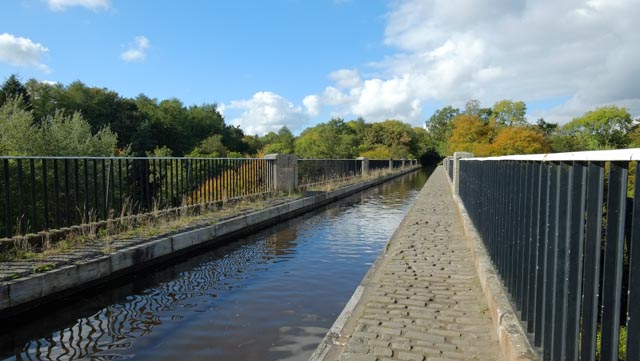

Self-sufficiency
It was a timely purchase for developing a strategically located, self-sufficient farming and industrial enterprise. From 1822, the estate had its own dock on the Union Canal for transporting goods to market via Glasgow and Edinburgh. From 1840, the estate’s station at Causewayhead provided direct access to the national railway network. The physical resources matched the location – water, timber, coal, limestone, ironstone and clay.
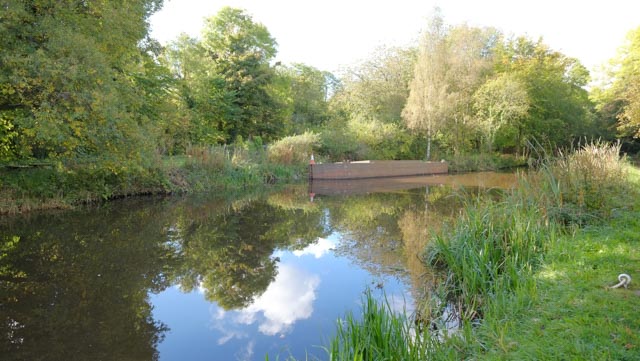

Considerable effort went into locating and exploiting the estate’s mineral resources. An 1872 report of one test bore reads: “Number 1 bore Tarduff is down nearly 50 fathoms and I have stopped it as it is in the sandstone. I cannot make out what position we have been boring in. I suspect we are below the position of the slatey band, altho’ I would not have expected it” (Stirling papers 1884-1893). A fireclay pit is marked on the Ordnance Survey maps and Charles Stirling even experimented with producing field drains on site.
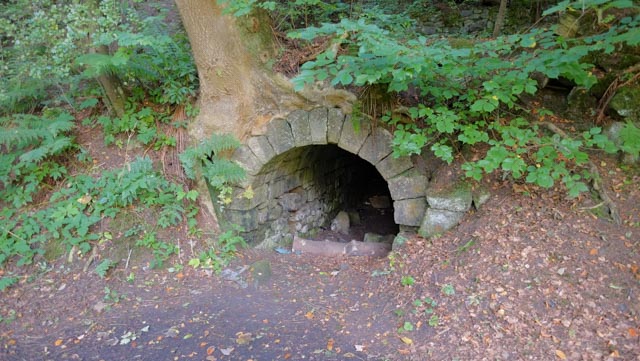

The mill fed from the Bowhouse Burn (its water pressure once boosted by a hydraulic ram) and the entrance to the shaft of a drift mine. Nearby is a large limekiln and an industrial load-bearing stone bridge.
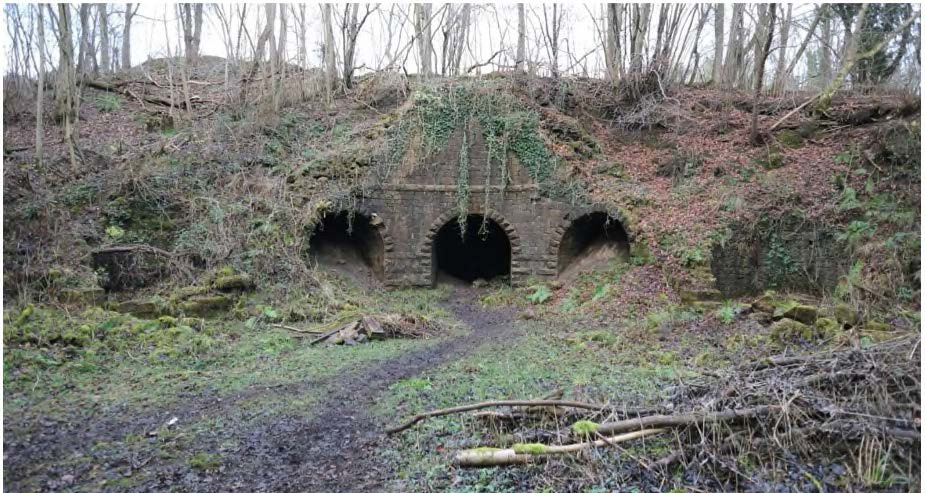

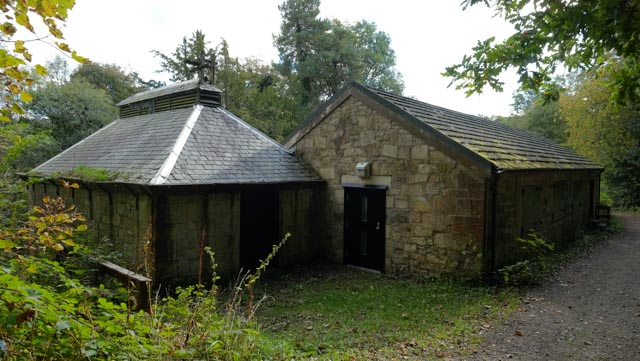

Leisure
Agriculture and industry aside, Muiravonside was laid out to impress visitors and support well-to-do family life and leisure. A sweeping entrance drive leads from the main road to the stables and mansion house. The main blocks also included estate offices, a dovecote and an impressive quadrangle leading to a walled pleasure garden. Planting was arranged to lead around the estate, with spectacular views of the hills to the east, and to a chapel and the Stirling family burial ground in the woods.
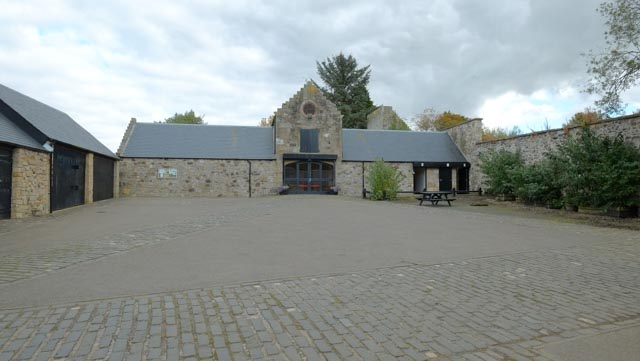

To the east of the old sawmill are a curling pond, a half-moon garden and orchard where you can see the remains of espalier planting. Woodland walks lead along the Bowhouse Burn and up to the Pleasant. Walks were built along the riverside and up through the woods to a summerhouse, and on to the main house and home farm.
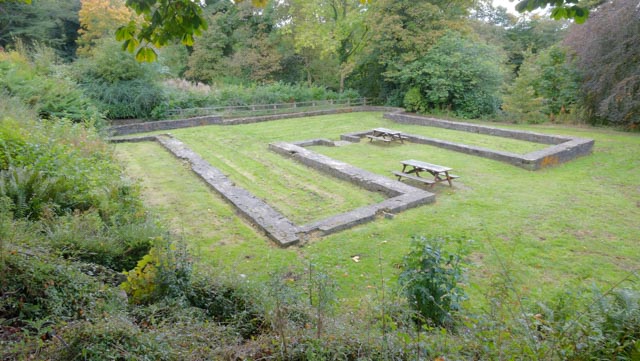

The mansion house itself is now sadly reduced to the outline of a few stone courses following demolition in the 1970s. Muiravonside’s last owner sold the estate in 1977, and the present-day estate – managed by Falkirk Community Trust – includes extensive parkland and woodland walks, a visitor centre and café, and a children's play area. Newpark farm is managed as a livestock farm for rare breeds.
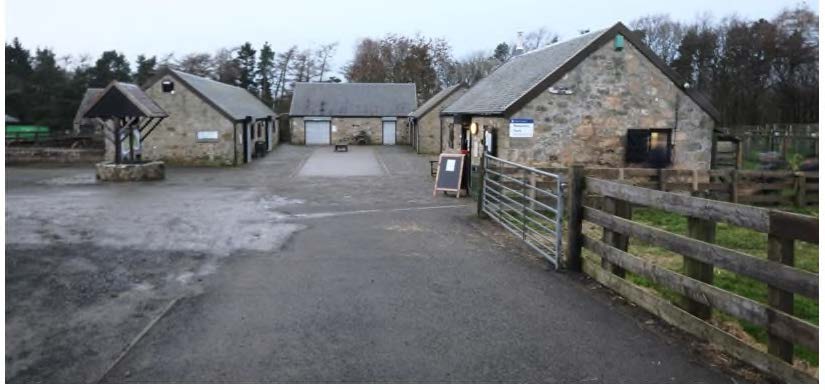

By Iain Kirkman, Scotland’s Garden and Landscape Heritage volunteer 2020.
